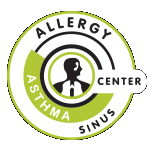MOLD
Mold Matters
Concerned about mold exposure at home, at work or at school? While molds are a natural part of the outdoor environment, the spores they produce can become airborne and can lead to allergy problems. Damp conditions and an abundance of vegetation equal lots of mold spores.
For molds to become an indoor problem, there must be excessive indoor moisture. Often this follows areas of water damage or leaks. Excessive indoor molds can cause nasal and chest allergy symptoms in much the same way that other airborne allergens do.
The Annals of Allergy, Asthma, and Immunology have an interesting article looking at early childhood mold exposure and the risk of developing asthma. As with most published studies, the devil is in the details. One of the most important questions to ask is how the authors define asthma. In many studies, patients are defined as asthmatic based on parental report or prior physician diagnosis, but those can be subjective. This study, however, used the best criteria: bronchodilator reversibility or methacholine challenge, which is the gold standard in asthma diagnosis.
The authors assessed for the presence of mold in homes by a couple of interesting, and perhaps mildly humorous, routes. First, “an indoor visual and olfactory observation of the house conditions was conducted for the presence of carpets and evidence of mold.” That’s a very “sciency” sounding way of saying they went looking and smelling for mold. They did, however, perform a quantitative analysis by sampling house dust and performing an Environmental Relative Moldiness Index (ERMI). The study found that kids from a high ERMI home at 1 year of age were 2.6 times as likely to have asthma at age 7. Interestingly, there was no correlation to allergic sensitization to mold. So either molds increase the development of asthma via a non-allergic mechanism, they needed to test for more kinds of mold, or there is some other confounding factor that goes along with a high ERMI level, like dust mites, for instance. Cigarette smoking in the home also raised the risk of asthma at age 7. The use of home dehumidifiers, presence of carpeting, age of home, and the categorization of home moldiness based on visual inspection did not correlate with asthma at age 7.
Regardless, mold and dust mite allergies can be tested for and will respond to medications and immunotherapy. So schedule an appointment with one of our board certified allergists!
Wondering what symptoms to look for?
Learn more: Allergy Symptoms and Asthma Symptoms

